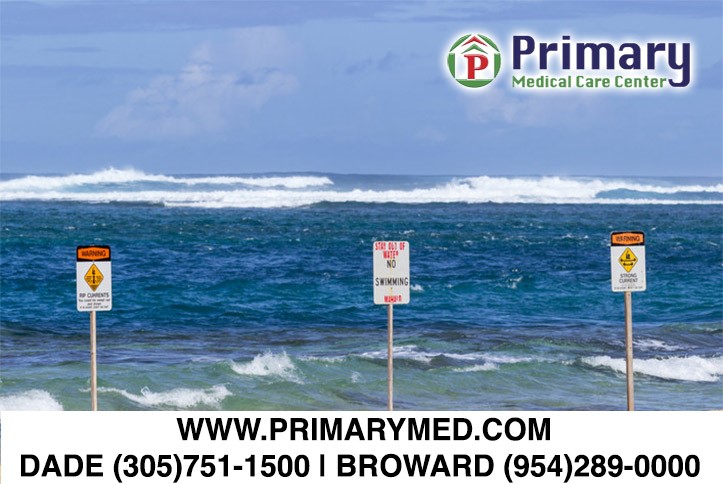Memorial Day marks the official start of summer all over the United States and as the weather gets hotter in most places, the beaches invite crowds of sun- worshippers and aquaphiles. However, just as sun worshippers are cautioned to use sunscreen to protect against the harmful ultraviolent rays from the sun, the United States Lifesaving Association (USLA) and the National Oceanic and Atmospheric Administration (NOAA), issue strong warnings to beachgoers about the dangers of rip currents in the water.
National Geographic defines a rip current as a “strong flow of water running from a beach, back to the open ocean, sea, or lake.” NOAA explains that rip currents move perpendicular to the shore and are very fast, reaching speeds of up to 1 to 2 feet per second on average, thus a person caught in a rip current can be swept away from the shore very quickly. According to USLA, “Rip currents do not pull people under the water- they pull people away from the shore. Drowning deaths occur when people are unable to keep themselves afloat and swim to shore.”
USLA warns that rip currents can be deadly, as they are powerful channeled currents of water. Some clues to look for to indicate the presence of rip currents are:
- A channel of churning, choppy water.
- An area having a notable difference in the color of the water.
- A line of foam, seaweed, or debris moving steadily seaward.
- A break in the incoming wave pattern.
USLA suggests the following tips to avoid and survive rip currents:
- Learn to swim and never swim alone.
- Whenever possible, swim at a lifeguard protected beach.
- If caught in a rip current, remain calm to conserve energy and think clearly.
- Don’t fight the current. Swim out of the current in the direction following the shoreline. When out of the current, swim towards the shore.
Source: https://www.usla.org/page/ripcurrents
https://www.nationalgeographic.org/encyclopedia/rip-current/
https://oceanservice.noaa.gov/education/tutorial_currents/03coastal3.html
